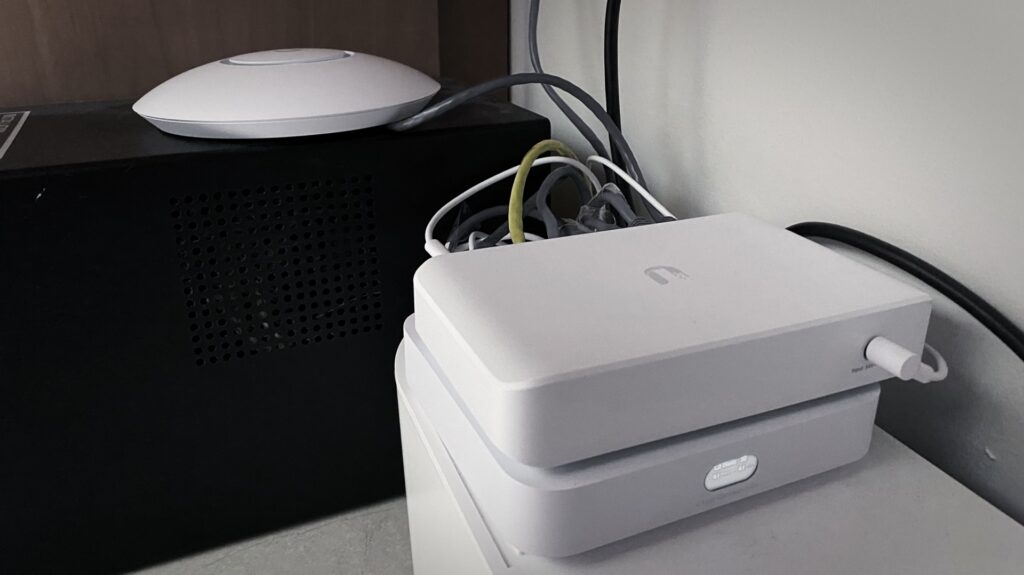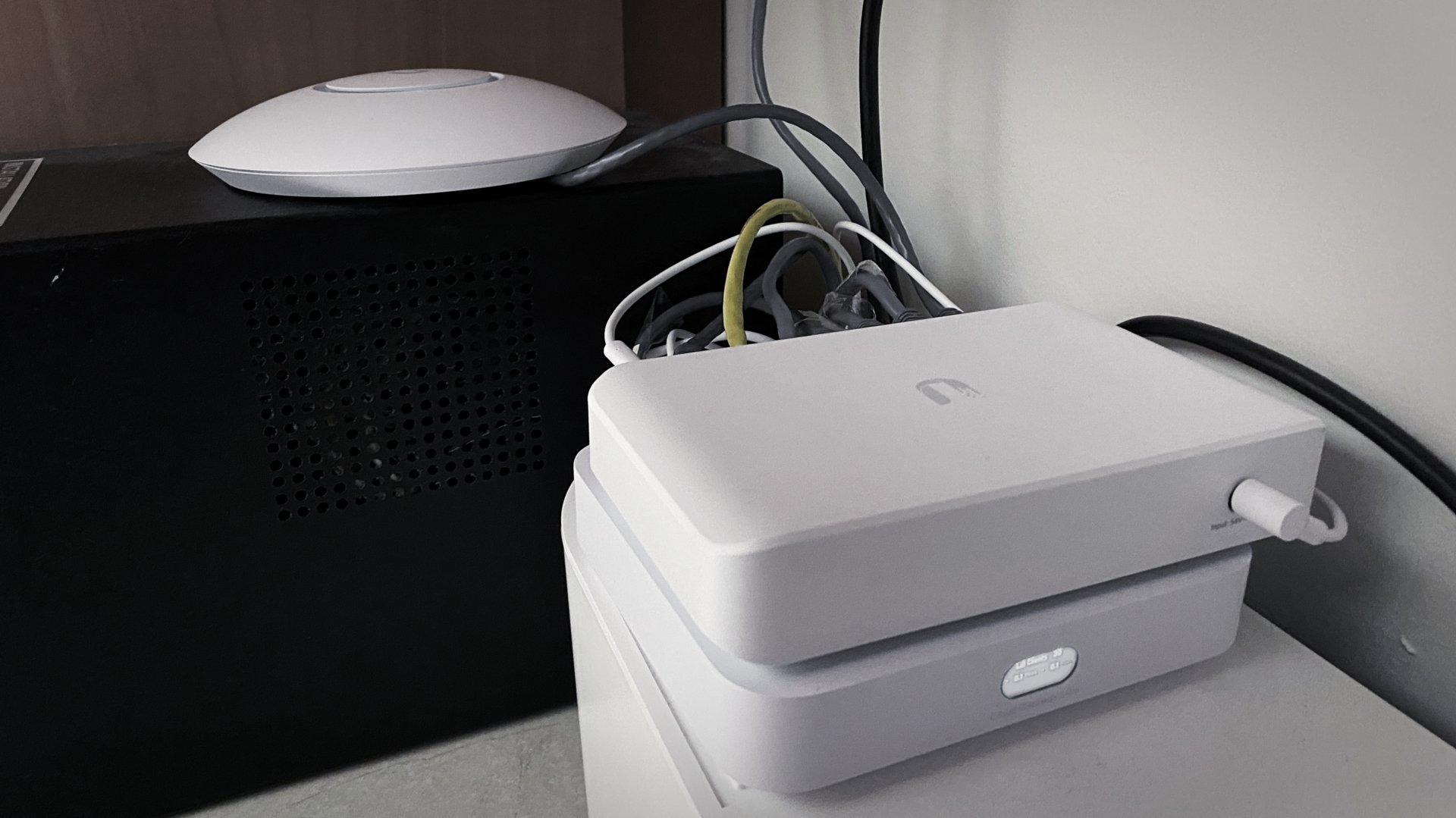The Fitzgibbon PoP – the home network so named because, well read on and find out.
In the beginning, 2004 lets say, there was the shoe rack data centre. This was a Telstra cable modem, WRT54G router and access point running Tomato firmware, a small UPS, the terrible NAS of the day which was slow and required a software client on the PC. There was also a network printer sharing gadget since network connectivity was yet to be integrated into printers at that time. And a voice gateway, we were early adopters of VoIP at about $5.00 per month compared to the outrageous price for a landline. There was an 8 port switch as well to take care of all the connectivity. Wireless was leisurely, everything worked just fine – gentler simpler times they were.
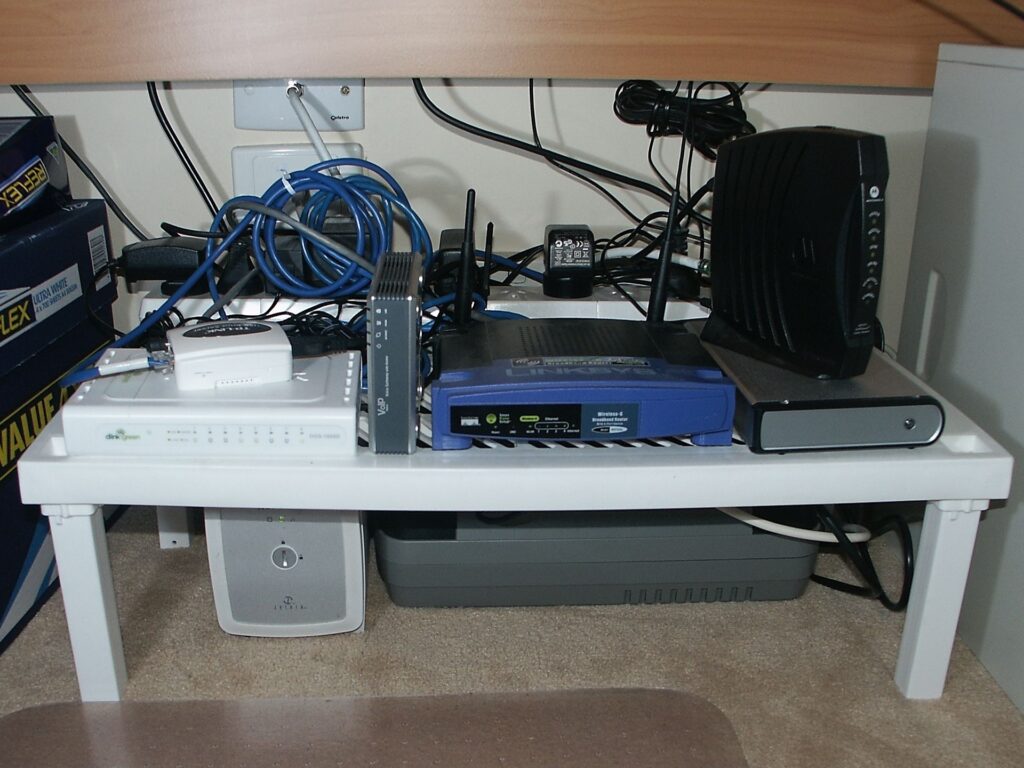
Naturally these good times would not last forever. The NAS was replaced with a Synology DS110j, a wondrous device that started a long association with Synology equipment. This was the very base model, possibly the slowest one they ever made and it worked flawlessly for years. It was retired when software support ran out and its probably still running today. The modem and wireless was replaced with a TP-Link device. I discovered a place that dismantles data centres and resells the equipment and so a Dell server and DLink switch entered the house while the UPS got massively upgraded. The whole lot ended up in a Gator case to keep it all neat and tidy.
This is about the time that Untangle was implemented. Untangle is what powered the router lets say, at first on the Dell hardware which proved way too noisy, and then on the Dell computer on top of the rack which was fitted with two network cards. I would use Untangle for a very long time because it worked well. In addition to routing it also provided edge protection for anti virus and other threats which worked flawlessly. I liked it a lot.
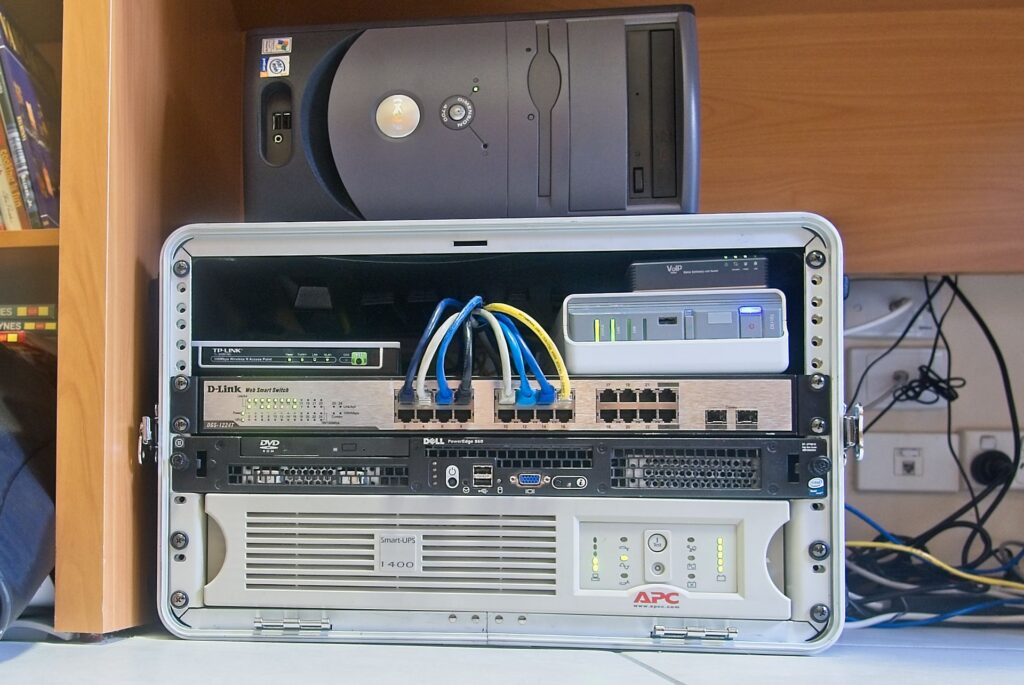
The next step included investigating traffic shaping (the Packetshaper) and the router moved to a repurposed WXC chassis. This had the perrabit board and boot ROM removed, pico power supply installed along with an SSD and fan management to keep the noise down. Untangle lived happily here for years. A bigger rack was acquired because it seemed like a good idea at this point.
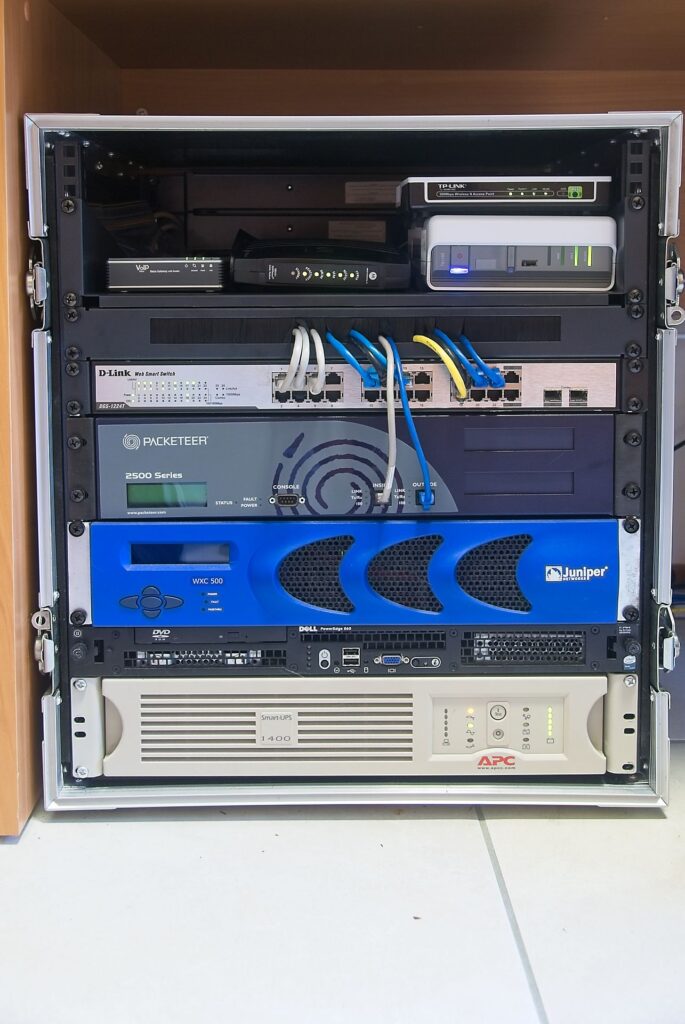
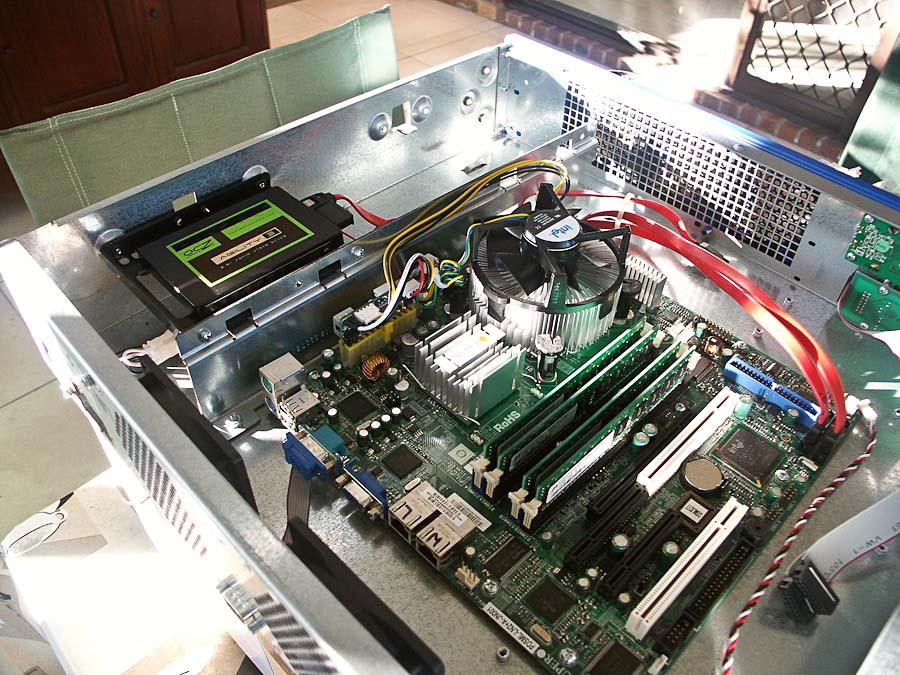
You might imagine this would be perfectly adequate but wait, there’s more. A Riverbed is added, I’ve found a more up to date packetshaper with licenses, the wireless is now handled with a Cisco access point, and an Optus pico cell (the box with the yellow stripe) is added to handle local mobile coverage issues.
When the NBN was deployed, Telstra was gouging on price. I asked if they were prepared to meet the competition on price, request denied and we went with Optus. Mobile on Wifi was yet to be invented and so this was their solution.
The Riverbed Steelhead is a network optimisation device used for maximising bandwidth between points. It uses caching and compression to transmit data. Imagine live zip files point to point and that’s the gist of it. In this configuration it’s reporting only since a second device is required for active compression of data. This was acquired to see how they work and the answer is it depends. Like many things they have a sweet spot and for home they have no practical use at all. Traffic passes through when it is turned off and this one was turned of permanently once the novelty wore off.
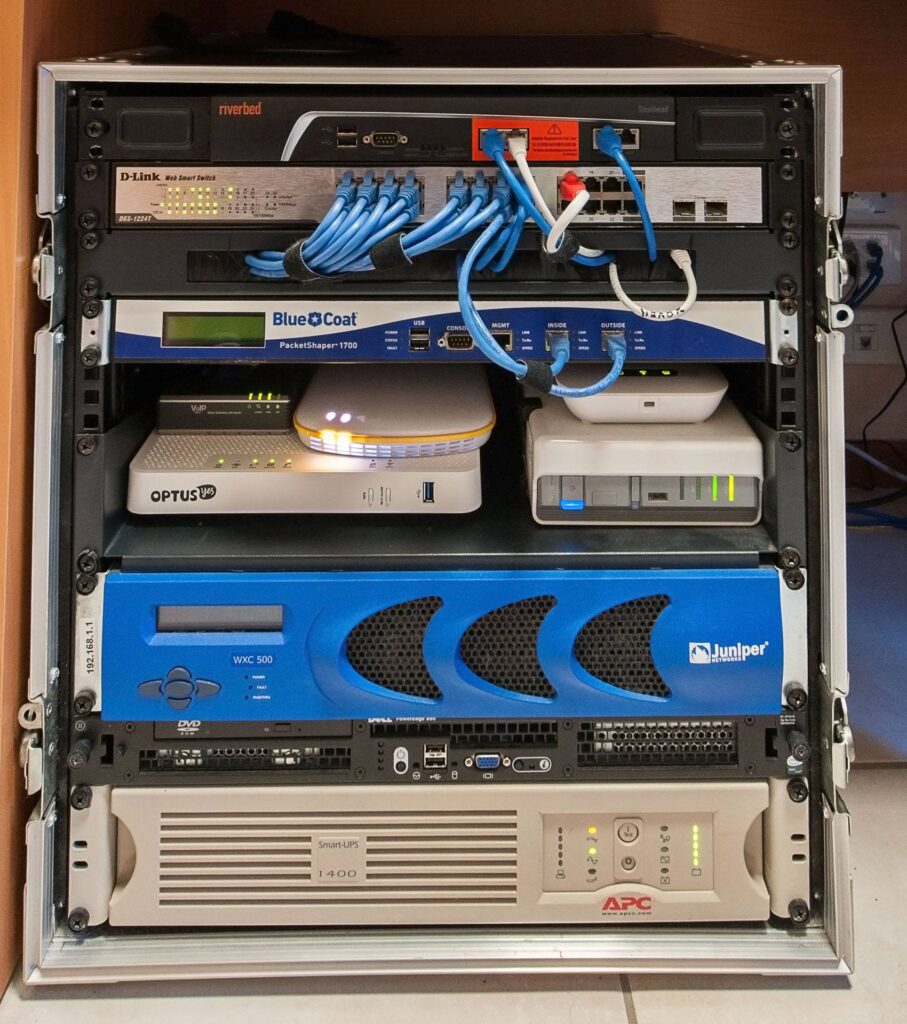
Down the track a bit further and there are changes. Untangle is moved into a smaller rack mount chassis and there it stayed until the next big rearrangement, the WXC chassis having stopped altogether. The DLink switch had a permanent unscheduled outage one night and was replaced with the only thing I could find at short notice, a TP-Link unmanaged 24 port switch. A good choice actually, low power consumption, cool and quiet. The Synology Rackstation RS815 joined the team to manage growing data storage requirements and it’s still going strong. And a TP-Link Omada access point was added to handle the Wifi. This configuration remained for some time. Some folks may ask about whether that’s an optimal placement for an access point and it turns out access points have delivered adequate coverage and performance from this location for decades.
As for the TP-Link thing, inexpensive and works just fine. No need to pay more especially for home.
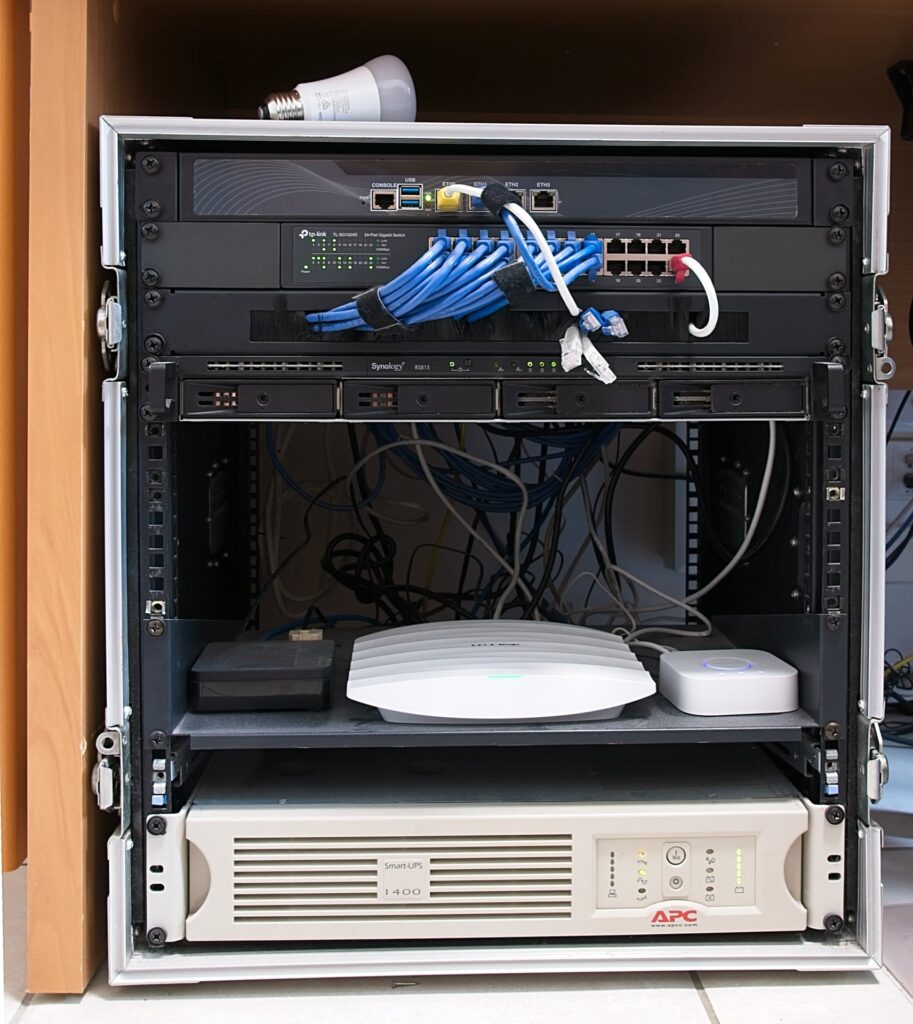
At the end of 2024 a revolution occurred. The rack and it’s contents were consigned to history in favour of something smaller and smarter. Behold the solution, Unifi cloud gateway ultra, 8 port POE Unifi switch, Unifi U6+ access point, a Unifi 2.5GbE switch for the imaging workstations and DS225+ NAS and a couple of small POE switches for the various aggregation points. The old switch connects the shed and is where the HA server, smart light controller and backup NAS live. There is another big UPS installed since the rack mount one also came to the end of its watch. APC devices have impressive longevity.
The idea was to provide a small footprint with POE so that the access point could be ceiling mounted and the remote switches could operate without local power. If the power went out the network would still operate powered from the one UPS. Works well as it happens and central management makes it easy to operate. The wireless access point worked well enough at its location under a desk and so it doesn’t need to be ceiling mounted. We have gathered a lot of wireless devices over the years including a bunch of kitchen appliances. It’s weird having the cooktop,fridge and dishwasher reporting their every move but we live in modern times.
While Unifi equipment is the YouTube home labbists shiny thing of choice the reality is it works just fine for home and is reasonably cost effective so long as one does not go nuts and buy from the top shelf. It’s very easy to deploy and management is integrated so there is only one place to go to look at all the devices. I can’t see any reason to change anything at this point.
Are we there yet? I think so, for now at least.
